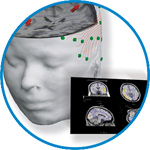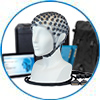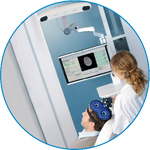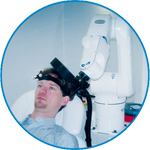- Home
- About ANT
-
Products

asa
asa is a highly flexible EEG/ERP and MEG analysis package with a variety of source reconstruction, signal analysis and MRI processing features.
.jpg)
eego mylab
The new frontier in multimodal brain research. With up to 16 kHz sampling rate, 256 EEG channels and unique software features, eego mylab gives you an unprecedented in-depth understanding of the human brain.

eego sports
eego sports offers complete freedom to collect high-density EEG data, bipolar EMG signals, and a variety of physiological sensor data, wherever and whenever required, with publish quality data in less than 15 minutes!

waveguard net
The waveguard net sets a new standard for research applications requiring high-density EEG data acquisition with quick preparation time, high flexibility, and subject comfort.

visor2
Our new and upgraded visor2 solutions integrate all the latest technologies for navigated rTMS, dual-coil navigation support, EEG-TMS recordings and pre-surgical evaluation for the highest quality in research and clinical procedures.

powerMAG ANT
The PowerMAG ANT 100 rTMS stimulator is designed for the specific needs of high-end TMS applications. Powerful high-frequency TMS as well as high precise single pulse and repetitive pulse protocols are combined in one single device.

xensor
xensor offers the solution for digitization of 3D electrode positions. xensor takes care of the whole procedure; it records, visualizes and stores positions acquired with a dedicated digitizer.

waveguard original
waveguard original is the cap solution for EEG measurements compatible with fMRI, MEG and TMS system. Use of active shielding guarantees performance in even the most demanding environments.

waveguard connect
waveguard connect EEG caps are a perfect match for hospitals and institutes aiming at reliable EEG, maximum uptime and great patient comfort! For optimal signal quality, the electrodes are made of pure, solid tin.

waveguard touch
waveguard touch is a dry electrode EEG cap. The unique Ag/AgCl coated soft polymer electrodes provide stable, research-grade EEG signals while maintaining subject comfort. The combination of these innovative dry electrodes and the industry-leading waveguard cap makes waveguard touch the best solution for dry EEG.

smartmove
smartmove allows planning of a complete TMS session ahead by defining stimulation sites based on anatomical MRI information and functional information like fMRI, PET or EEG/MEG.
Stay - References
- Support
- Events
- News
- Contact Us
You are here
P 195. TMS/EEG responses in epilepsy patients
P 195. TMS/EEG responses in epilepsy patients
Introduction
Diagnosing epilepsy is often time-consuming, partially due to the limited sensitivity of the routine electroencephalogram (EEG). Therefore, there is a need for additional diagnostic measures. There is usually a small brain area responsible for the seizure onset, although it cannot always be localized. Transcranial magnetic stimulation (TMS) enables quantification of the brain’s excitability. Previous studies have shown an increased excitability in epilepsy patients (Badawy et al., 2010). When TMS is applied while recording EEG, a characteristic waveform-the TMS evoked potential (TEP)-is induced in the EEG. A previous study showed that TEP consists of an early part, which is always present, and a late part, that was present in 9 out of 11 epilepsy patients, and not in healthy subjects (Valentin et al., 2008).
Objectives
To investigate late TEP responses and the spread of induced activity over the cortex in healthy subjects and epilepsy patients.
Materials and methods
TMS/EEG was recorded in healthy controls and adult epilepsy patients using a Magstim Rapid2 stimulator and a 64-channel EEG amplifier (ANT Neuro, Enschede). TMS was targeted at the left and right motor cortex. We administered 75 pulses at an intensity of 110% motor threshold for both targets. The TEP was obtained by averaging over all TMS pulses, and the baseline power was then subtracted from the late response power. The values for all trials before and after the TMS pulse were then compared using a student t-test. Increases in power of >1 μV in the 9 electrodes surrounding the stimulation point, with a significance level of p < 0.01, were regarded as a late response.
Results
At present, 18 healthy subjects (11 males, mean age 28 years) and 10 epilepsy patients (3 males, mean age 24 years) have been included. Nine patients were taking anti-epileptic drugs. In all healthy controls and epilepsy patients we found an early TEP, and three patients and five healthy subjects showed a late response.
Conclusion
Initial results show that the late responses are not sufficient to reliably differentiate between healthy subjects and epilepsy patients. We are currently analysing the activity spread data. In addition, more patient measurements have been scheduled.

 Read more
Read more.jpg)




